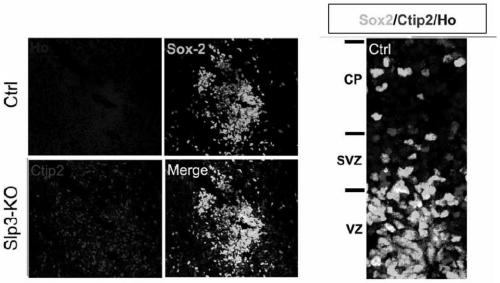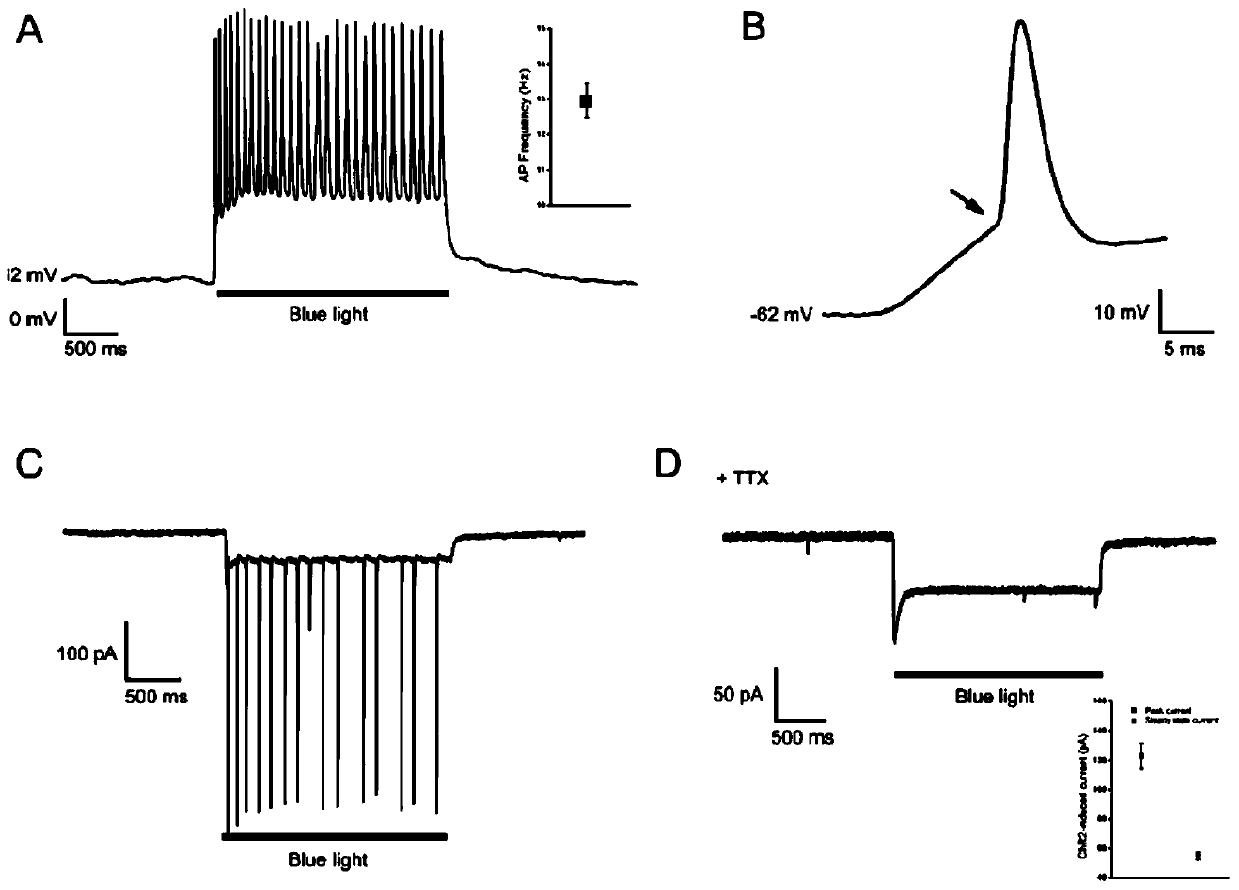Method for constructing brain-like tissues by using umbilical cord mesenchymal stem cells
A technology for stem cells and brain tissue, which is applied in the field of building brain-like tissue, and can solve problems such as the lack of methods for differentiation into neurons and glial cells, the lack of identification methods for neuron functions, and the lack of brain-like functions.
- Summary
- Abstract
- Description
- Claims
- Application Information
AI Technical Summary
Problems solved by technology
Method used
Image
Examples
Embodiment 1
[0071] Example 1 Gene Editing of Human Umbilical Cord Mesenchymal Stem Cells
[0072] Human umbilical cord mesenchymal stem cells were gene-edited using the CRISPR / Cas9 system to construct a cell line expressing the light-sensitive channel (ChR2), which is called a gene-edited cell line. The method is as follows:
[0073] The ChR2(H134R)-EYFP cDNA from the plasmid vector pAAV-hSyn-hChR2(H134R)-EYFP (BioVector NTCC Type Culture Collection) was amplified by PCR and the ChR2(H134R)-EYFP fragment was inserted into AAVS1-pur-CAG -EGFP donor plasmid (when constructing this plasmid, the hrGFP gene in the AAVS1-pur-CAG-hrGFP plasmid (plasmid #52344, Addgene) was replaced by the EGFP gene, and the woodchuck hepatitis post-transcriptional regulatory element (woodchuckhepatitis post-transcriptional Regulatory element, WPRE) and human growth hormone (human growth hormone, hGH) Poly A inserted into the 3'-end of the EGFP gene) instead of EGFP, AAVS1-pur-CAG-ChR2 (H134R)-EYFP donor plasmid ...
Embodiment 2
[0075] Example 2 Culture of embryoid body-like neurospheres
[0076] The gene-edited human umbilical cord stem cell line obtained in Example 1 and the normal human umbilical cord mesenchymal stem cell line were mixed and subcultured at a ratio of 2:1 at the stem cell stage, and the steps were as follows:
[0077] 2.1 The mesenchymal stem cell line was grown on MEFs in a 6-well plate for 5-7 days, and 2 ml of human umbilical cord mesenchymal stem cell complete medium (NEM) was used to change the medium every day, and 2 μM bFGF factor was added every time the medium was changed.
[0078] 2.2 On the 5th-7th day when it can be subcultured, digest the clone with disapase for 2 minutes, and suspend culture in stem cell medium (NEM) to the 4th day (recalculate the number of days from the digestion, add 2 μM SB431542 (Stemgent) and 2 μM DMH1 factor (Torcris) without adding bFGF factor); from the 5th day, the stem cell culture medium was replaced with the neural induction medium (NIM) ...
Embodiment 3
[0079] Example 3 Differentiation of Brain Organoids
[0080] 3.1 Transfer the embryonic body (EB)-like neurospheres formed in Example 2 to a 6-well plate to adhere to the wall. Change the medium 2ml every 2 days, add SB431542 and CHIR factor 2μM until the 16th day.
[0081] 3.2 After culturing until the 16th day, the neural rosette neural tube-like structure neural precursor cells formed by adherent culture were blown up and cultured in suspension. After 7 days of suspension culture (Day 23), neurospheres with neural rosette neural tube-like structures were obtained.
[0082] 3.3 Embed neural rosette neural tube-like structure neurospheres in matrigel gel and culture in induction medium (NIM) until the 30th day. This process adopts neural induction medium (NIM) culture + insulin, N2 (LifeTechnology), B27 (Life Technology).
[0083] 3.4 Transfer the matrigel-coated neural rosette neural tube-like neurospheres to a low-adsorption 6-well plate and culture them on a shaker for ...
PUM
 Login to View More
Login to View More Abstract
Description
Claims
Application Information
 Login to View More
Login to View More - R&D
- Intellectual Property
- Life Sciences
- Materials
- Tech Scout
- Unparalleled Data Quality
- Higher Quality Content
- 60% Fewer Hallucinations
Browse by: Latest US Patents, China's latest patents, Technical Efficacy Thesaurus, Application Domain, Technology Topic, Popular Technical Reports.
© 2025 PatSnap. All rights reserved.Legal|Privacy policy|Modern Slavery Act Transparency Statement|Sitemap|About US| Contact US: help@patsnap.com



